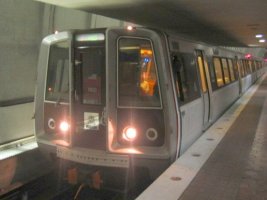
Gillig Phantom 6031 on Bellefield Avenue at Fifth Avenue, Pittsburgh, PA, November 27, 2015
Astute visitors to Oren’s Transit Page may have noticed that the July 2016 Bus Photo of the Month was from a city that had never been featured on this website before, nor had there been any announcement that a new section had been unveiled. As is often the case, it took me a bit longer than I had hoped or planned, but I added a whole slew of new photos to Oren’s Transit Page last week and decided to feature one of the new photos as a photo of the month before the “public announcement” for the update. Perhaps you discovered the new content via your own exploration, and perhaps not. But either way, here is a fairly exhaustive (albeit not 100% complete) list of what got added in this update.
This update includes photos from two places I had never been before until recently. The first new section is the Pittsburgh section. I was in Pittsburgh for a few days in November of 2015 and while my transit riding was limited to a short jaunt on the light rail and a ride on the Duquesne Incline, I still got a decent number of photos of those modes and the local bus system’s colorful buses as well. One of them was featured as the aforementioned Bus Photo of the Month for July. I plan on using some upcoming “Viewfinder” features to share some of the stories behind the photos I took in the Steel City.

Orion VII 2010-06 on Paseo Gilberto Concepción De Gracia at the Covadonga Terminal, San Juan, Puerto Rico, March 21, 2016
The second new section isn’t just a new city but also marks the first time Oren’s Transit Page has photos from the Caribbean! I was in Puerto Rico for a week in March and in addition to riding San Juan’s Tren Urbano, I also rode and got photos of the local bus system in San Juan, the Autoridad Metropolitana de Autobuses de Puerto Rico (AMA).
I spent about 48 hours in Amsterdam about a month ago, it was my first trip to the Netherlands since 2008. Unlike my last trip, I didn’t travel to other cities in the country. However, I still got plenty of photos of the various trams currently operating there, the new M5 Series cars on the Amsterdam Metro, and the city’s buses. I also got some photos of Nederlandse Spoorwegen trains and the Thalys while on my way to and from the airport.
A number of pages within the Israel section are updated, with a handful of brand new additions in this part of the website, too. You can find photos of the new MAN NL-323F and MAN NG-363F 5 door articulated buses in both Jerusalem and Tel Aviv. There are also new photos of Afikim, Metropoline and Kavim buses in the Tel Aviv area, and Egged intercity buses from throughout the country. Of course, no update to the Israel section would be complete without an update to the Jerusalem Light Rail gallery, and a number of light rail photos from this update are also planned for upcoming Viewfinder features. Last but certainly not least, there are also updates to the Israel Railways galleries.

Type 12G 819 on Damrak, Amsterdam, Netherlands, May 31, 2016
In an ongoing effort to make Oren’s Transit Page as accurate as possible, all references to WMATA’s New Flyer DE42LFA and DE62LFA buses have been updated to call these buses New Flyer
DE40LFA and
DE60LFA buses, respectively. This is in order to have the captions on this site match the builder’s plates on board the buses. (It is acknowledged that other websites and internet sources refer to these buses by the former designations, and it is unlikely that the entire internet will coalesce around a single designation anytime soon.) Additionally, some photos of MAN intracity buses in the Israel section that had been referred to as NL-313s have been corrected to be NL-323Fs for while the differences between these models are slight, they are different models and should be noted accordingly.
As I mentioned several times, I am planning to feature the stories behind a number of photos from this update in addition to older photos from throughout Oren’s Transit Page here on the Travelogue as part of the Viewfinder series. In addition, I have several system reviews planned of cities I have been to recently. Needless to say, you should be sure to check back for all that and more! If you’re a fan of Oren’s Transit Page on Facebook, you’ll get site updates right in your news feed, so be sure to click “like” if that interests you!



